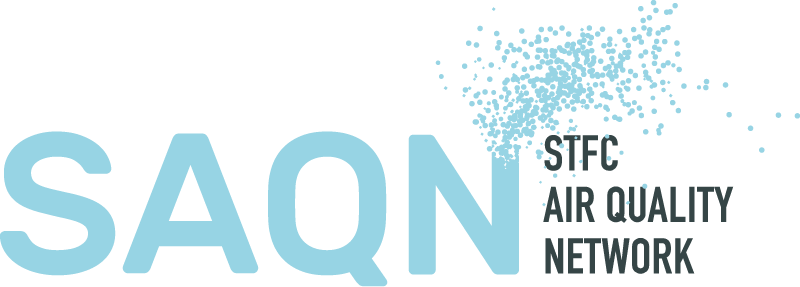We’re pleased to welcome our first guest blog from Jim Mills, Chair of Environmental Industries Commission Air Quality Group. SAQN members can share their responses on our new Discussion Board.

As the Chair of the Environmental Industries Commission (EIC), Air Quality Group, I was delighted to be invited to engage in conversation with the STFC Air Quality Network (SAQN). Our group consists of a wide range of environmental industry members who are keen to learn about and engage with some of the cutting edge research conducted by SAQN and also to share some of our own challenges and ideas with the academics and researchers within the SAQN.
There are four main categories of EIC members:
· Major corporates (eg major industrial forms involved in automotive and energy technology, major waste and resources firms etc) NRMM manufacturers, rail, marine and aviation companies, etc)
· Abatement Technology Companies (Retrofit systems, alternative fuels, combustion experts, green wall providers, pollution catalysts, absorbents, HVAC companies, etc)
· Monitoring and Analysis (sensor and reference grade monitoring technologies, data analysts, computer modelling, indoor air quality and ventilation specialists, etc)
· Consultants (some specialists operating in one or more of the above and many large internationals operating in most or all of the above.
As EIC members, we all share common goals and those are, to minimise the impact of our own and our clients operations on the environment in general and more specifically, on air pollution and climate change.
Here is a non-exhaustive selection of some of the specific issues we are currently involved in, which we hope will provoke discussions with people within the SAQN.
1. Standby generator sets many of which burn diesel fuels not only in times of power outages but also are used to supply power to the National Grid in times of high demand. Some of this plant is older technology and thus generates higher levels of NOx and PM than more modern generators. Perhaps alternative, cleaner fuels could be used to reduce emissions with immediate benefits and without significant capital investment as an interim step whilst regulations are tightened and technology is updated?
2. Non Road Mobile Machinery (NRMM) This equipment used on construction sites is not currently regulated to the same standards as on road vehicles but are a contributor to NOx and PM emissions within our cities often close to sensitive receptors. How might we reduce these emissions, develop good practice and enforce compliance?
3. Mobile refrigeration units. These also are not regulated to the latest Euro VI standards and are often not considered within CAZ or LEZ schemes, but they contribute to exposure in cities and around large distribution depots around the UK. They can run continuously for up to 24 hours a day, making them a serious source of emissions to air. How much do these units contribute to poor air quality and can we find cleaner ways of running refrigerated containers with lower emissions?
4. Green walls and other barriers and abatement systems are now being used around an increasing number of schools, nurseries and homes for the elderly in an attempt to reduce air pollution exposure. How effective are these interventions and how might we measure and/or improve their efficacy?
5. Encouraging the monitoring of carbon dioxide in addition to criteria pollutants. We can then calculate criteria pollutant ratios to CO2 in order to produce emissions indices, which can assist with source apportionment studies and to study changes in road transport fleet emissions over time. Absolute pollution concentrations vary with meteorology, but emissions indices can better show underlying emission trends and are much less affected by weather. Given the low cost of CO2 sensors, why don’t we routinely measure CO2 at existing air quality monitoring sites, in order to better exploit this important additional information?
6. If we are to improve indoor air quality, where most of us spend most of our time, the interface between outdoor air quality and indoor air quality needs to be better understood. How do we monitor indoors and outdoors in a manner that provides comparable data? How do sources of pollution indoors (cleaning materials, heating, cooking etc) react with pollution from outdoors? How is indoor air quality affected by building design and ventilation systems and to what extent can we intervene to reduce exposure and create healthier indoor spaces?
We are planning conversations around these and other air quality challenges and to facilitate further discussion, EIC are inviting SAQN to address one of our quarterly meetings during 2020 to explore how researchers and industry can work in collaboration to address some of these issues.
Jim Mills, EIC

